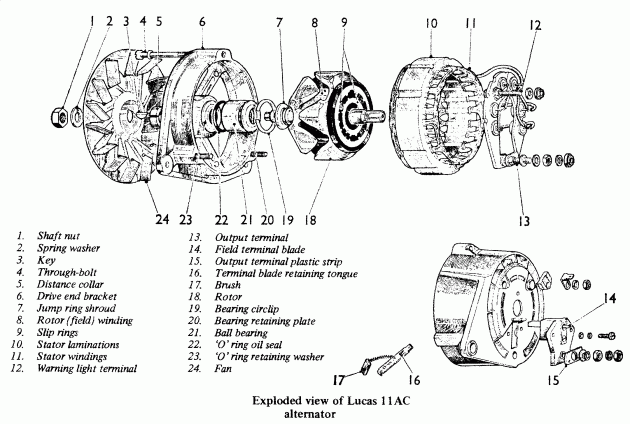


Somethings about Car Alternator
A car alternator is a small and light machine which is about the size of a coconut. Most of the car alternators are built by using aluminium shell. This is typically important as the metal is not capable of magnetizing and the aluminuim able to dispel the enormous heat that is generated by creating electrical energy. The alternator has three main components: stator, rotor and diode. When the alternator belt spins the pulley on the alternator, the rotor inside the alternator spins very very fast. The rotor is basically a magnet of group of magnets that spin, with all that speed, inside nest of copper wires. These wires are called the stator. A very theory just like dynamo, the spinning magnet within a bundle of copper produces electricity.
There are many terminals at the back of an alternator. These terminals are known as the S Terminal that can sense battery voltage, the IG Terminal is an ignition switch to start the voltage regulator, the L Terminal that shuts the circuit to the warning lamp, the B Terminal which is also the main alternator output terminal that is connected to the car battery and the F Terminal.

The efficiency of the alternator depends on the cooling as well. As it is liable to produce a huge amount of heat, it could be harmful to the alternator. That is why modern car alternators have cooling fans inside the aluminium casing. Besides, the voltage regulator supplies the power to the vehicle parts and controls the power that is yielded from the battery. The rectifier bridge or diode rectifier converts the power and the slings and brushes aid in the conduction of current to the rotor field winding.
The proper functioning of all the components of the car alternator gives the desired power for the smooth running of the vehicle. A car alternator is therefore is a vital element of the entire vechicle structure.






































